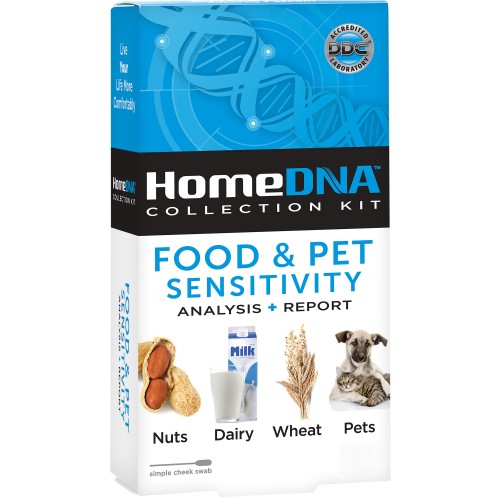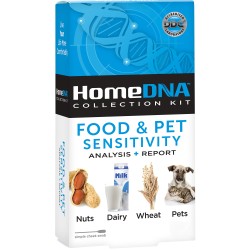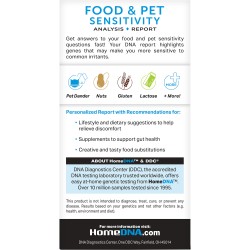Resources
If you’re interested in more in-depth information, this section contains links to the studies supporting the diet, lifestyle, and supplements tips included in your report. Links are listed by category for easy reference.
GLUTEN
I tested my vitamin D level. What do my results mean?
http://www.vitamindcouncil.org/i-tested-my-vitamin-d-level-what-do-my-results-mean/
Test ID: ZNS
http://www.mayomedicallaboratories.com/test-catalog/Clinical+and+Interpretive/8620
LACTOSE
Lactose Intolerance
https://www.niddk.nih.gov/health-information/health-topics/digestive-diseases/lactose-intolerance/Pages/facts.aspx
Lactose digestion from unmodified, low-fat and lactose-hydrolyzed yogurt in adult lactose-maldigesters.
https://www.ncbi.nlm.nih.gov/pubmed/?term=1559509
Improved clinical tolerance to chronic lactose ingestion in subjects with lactose intolerance: a placebo effect?
https://www.ncbi.nlm.nih.gov/pubmed/?term=9414969
The effect of oral supplementation with Lactobacillus reuteri or tilactase in lactose intolerant patients: randomized trial
https://www.ncbi.nlm.nih.gov/pubmed/?term=20391953
Beneficial effects of long-term consumption of a probiotic combination of Lactobacillus casei Shirota and Bifidobacterium breve Yakult may persist after suspension of therapy in lactose-intolerant patients.
https://www.ncbi.nlm.nih.gov/pubmed/?term=22402407
The effects of the DDS-1 strain of lactobacillus on symptomatic relief for lactose intolerance - a randomized, double-blind, placebo-controlled, crossover clinical trial.
https://www.ncbi.nlm.nih.gov/pubmed/27207411
Effect of exogenous beta-galactosidase in patients with lactose malabsorption and intolerance: a crossover double-blind placebo-controlled study.
https://www.ncbi.nlm.nih.gov/pubmed/15674309
Serum diamine oxidase activity is associated with lactose malabsorption phenotypic variation.
https://www.ncbi.nlm.nih.gov/pubmed/27593109
COW MILK PROTEIN
How I Treat Vitamin D Deficiency
https://www.ncbi.nlm.nih.gov/pmc/articles/PMC2835491/
Role of immunoglobulin G antibodies in diagnosis of food allergy.
https://www.ncbi.nlm.nih.gov/pmc/articles/PMC5004213/
Gut Microbiota as a Target for Preventive and Therapeutic Intervention against Food Allergy.
https://www.ncbi.nlm.nih.gov/pubmed/28657607
Baked Milk and Egg Diets for Milk and Egg Allergy Management.
https://www.ncbi.nlm.nih.gov/pubmed/26617232
Hypo-allergenic and therapeutic significance of goat milk
https://doi.org/10.1016/0921-4488(94)90105-8
Camel milk for food allergies in children.
https://www.ncbi.nlm.nih.gov/pubmed/16382703
EGG
Role of immunoglobulin G antibodies in diagnosis of food allergy
https://www.ncbi.nlm.nih.gov/pmc/articles/PMC5004213/
Baked Milk and Egg Diets for Milk and Egg Allergy Management.
https://www.ncbi.nlm.nih.gov/pubmed/26617232
Egg allergy
https://www.mayoclinic.org/diseases-conditions/egg-allergy/symptoms-causes/syc-20372115
Oral and sublingual immunotherapy for egg allergy.
https://www.ncbi.nlm.nih.gov/pubmed/25405335
PEANUT
The prevalence, severity, and distribution of childhood food allergy in the United States.
https://www.ncbi.nlm.nih.gov/pubmed/21690110
Role of immunoglobulin G antibodies in diagnosis of food allergy.
https://www.ncbi.nlm.nih.gov/pmc/articles/PMC5004213/
Aflatoxins: Implications on Health.
https://www.ncbi.nlm.nih.gov/pubmed/28428686
OTHER FOODS
Fish oil supplementation in pregnancy and lactation may decrease the risk of infant allergy.
https://www.ncbi.nlm.nih.gov/pubmed/?term=19489765
Fish consumption during the first year of life and development of allergic diseases during childhood.
https://www.ncbi.nlm.nih.gov/pubmed/?term=16867056
Role of selenium and zinc in the pathogenesis of food allergy in infants and young children.
https://www.ncbi.nlm.nih.gov/pubmed/?term=PMC3542500
Influence of diet on the gut microbiome and implications for human health
https://www.ncbi.nlm.nih.gov/pmc/articles/PMC5385025/
Dietary Fiber and Bacterial SCFA Enhance Oral Tolerance and Protect against Food Allergy through Diverse Cellular Pathways. https://www.ncbi.nlm.nih.gov/pubmed/?term=27332875
Impact of dietary factors and food processing on food allergy. http://onlinelibrary.wiley.com/doi/10.1002/mnfr.201200472/abstract;jsessionid=DD4CEBEF666280BB6FBC9C74910B712E.f01t01
Increased food diversity in the first year of life is inversely associated with allergic diseases.
https://www.ncbi.nlm.nih.gov/pubmed/?term=24508301
Vitamin D and food allergies in children: A systematic review and meta-analysis.
https://www.ncbi.nlm.nih.gov/pubmed/?term=28441981
The prevalence, severity, and distribution of childhood food allergy in the United States.
https://www.ncbi.nlm.nih.gov/pubmed/21690110
Dichlorophenol-containing pesticides and allergies: results from the US National Health and Nutrition Examination Survey 2005-2006.
https://www.ncbi.nlm.nih.gov/pubmed/23176881
Stress and food allergy: mechanistic considerations.
https://www.ncbi.nlm.nih.gov/pubmed/24428964
Nutrients Mediate Intestinal Bacteria-Mucosal Immune Crosstalk.
https://www.ncbi.nlm.nih.gov/pubmed/29416535
Various effects of different probiotic strains in allergic disorders: an update from laboratory and clinical data. https://www.ncbi.nlm.nih.gov/pmc/articles/PMC2883099/#b56
How I Treat Vitamin D Deficiency
https://www.ncbi.nlm.nih.gov/pmc/articles/PMC2835491/
Role of immunoglobulin G antibodies in diagnosis of food allergy.
https://www.ncbi.nlm.nih.gov/pmc/articles/PMC5004213/
Gut Microbiota as a Target for Preventive and Therapeutic Intervention against Food Allergy.
https://www.ncbi.nlm.nih.gov/pubmed/28657607
PET DANDER
Urban environment predisposes dogs and their owners to allergic symptoms.
https://www.ncbi.nlm.nih.gov/pubmed/29371634
Urinary levels of triclosan and parabens are associated with aeroallergen and food sensitization.
https://www.ncbi.nlm.nih.gov/pubmed/?term=22704536
Natural treatment of perennial allergic rhinitis.
https://www.ncbi.nlm.nih.gov/pubmed/11056414
Gut Microbiota as a Target for Preventive and Therapeutic Intervention against Food Allergy.
https://www.ncbi.nlm.nih.gov/pubmed/28657607
HISTAMINE
Histamine and histamine intolerance.
https://www.ncbi.nlm.nih.gov/pubmed/17490952
Effect of Different Cooking Methods on Histamine Levels in Selected Foods.
https://www.ncbi.nlm.nih.gov/pubmed/29200758
Circadian profiling reveals higher histamine plasma levels and lower diamine oxidase serum activities in 24% of patients with suspected histamine intolerance compared to food allergy and controls.
https://www.ncbi.nlm.nih.gov/pubmed/29154390
Diamine Oxidase from White Pea (Lathyrus sativus) Combined with Catalase Protects the Human Intestinal Caco-2 Cell Line from Histamine Damage
https://www.ncbi.nlm.nih.gov/pmc/articles/PMC5486577/
Antihistamine effect of supplemental ascorbic acid and neutrophil chemotaxis.
https://www.ncbi.nlm.nih.gov/pubmed/1578094
Specific change of histamine metabolism in acute magnesium-deficient young rats.
https://www.ncbi.nlm.nih.gov/pubmed/3111814
Vitamin B-6 nutriture and plasma diamine oxidase activity in pregnant Hispanic teenagers.
https://www.ncbi.nlm.nih.gov/pubmed/3098085
Physiological concentrations of zinc inhibit the release of histamine from human basophils and lung mast cells. https://www.ncbi.nlm.nih.gov/pubmed/2425567
Histamine and gut mucosal immune regulation.
https://www.ncbi.nlm.nih.gov/pubmed/24286351
New approach for the diagnosis of histamine intolerance based on the determination of histamine and methylhistamine in urine.
https://www.ncbi.nlm.nih.gov/pubmed/28715791





